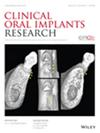Accuracy and Time Efficiency of Artificial Intelligence-Driven Tooth Segmentation on CBCT Images: A Validation Study Using Two Implant Planning Software Programs
Abstract
Objectives
To assess the accuracy and time efficiency of manual versus artificial intelligence (AI)-driven tooth segmentation on cone-beam computed tomography (CBCT) images, using AI tools integrated within implant planning software, and to evaluate the impact of artifacts, dental arch, tooth type, and region.
Materials and Methods
Fourteen patients who underwent CBCT scans were randomly selected for this study. Using the acquired datasets, 67 extracted teeth were segmented using one manual and two AI-driven tools. The segmentation time for each method was recorded. The extracted teeth were scanned with an intraoral scanner to serve as the reference. The virtual models generated by each segmentation method were superimposed with the surface scan models to calculate volumetric discrepancies.
Results
The discrepancy between the evaluated AI-driven and manual segmentation methods ranged from 0.10 to 0.98 mm, with a mean RMS of 0.27 (0.11) mm. Manual segmentation resulted in less RMS deviation compared to both AI-driven methods (CDX; BSB) (p < 0.05). Significant differences were observed between all investigated segmentation methods, both for the overall tooth area and each region, with the apical portion of the root showing the lowest accuracy (p < 0.05). Tooth type did not have a significant effect on segmentation (p > 0.05). Both AI-driven segmentation methods reduced segmentation time compared to manual segmentation (p < 0.05).
Conclusions
AI-driven segmentation can generate reliable virtual 3D tooth models, with accuracy comparable to that of manual segmentation performed by experienced clinicians, while also significantly improving time efficiency. To further enhance accuracy in cases involving restoration artifacts, continued development and optimization of AI-driven tooth segmentation models are necessary.


 求助内容:
求助内容: 应助结果提醒方式:
应助结果提醒方式:


